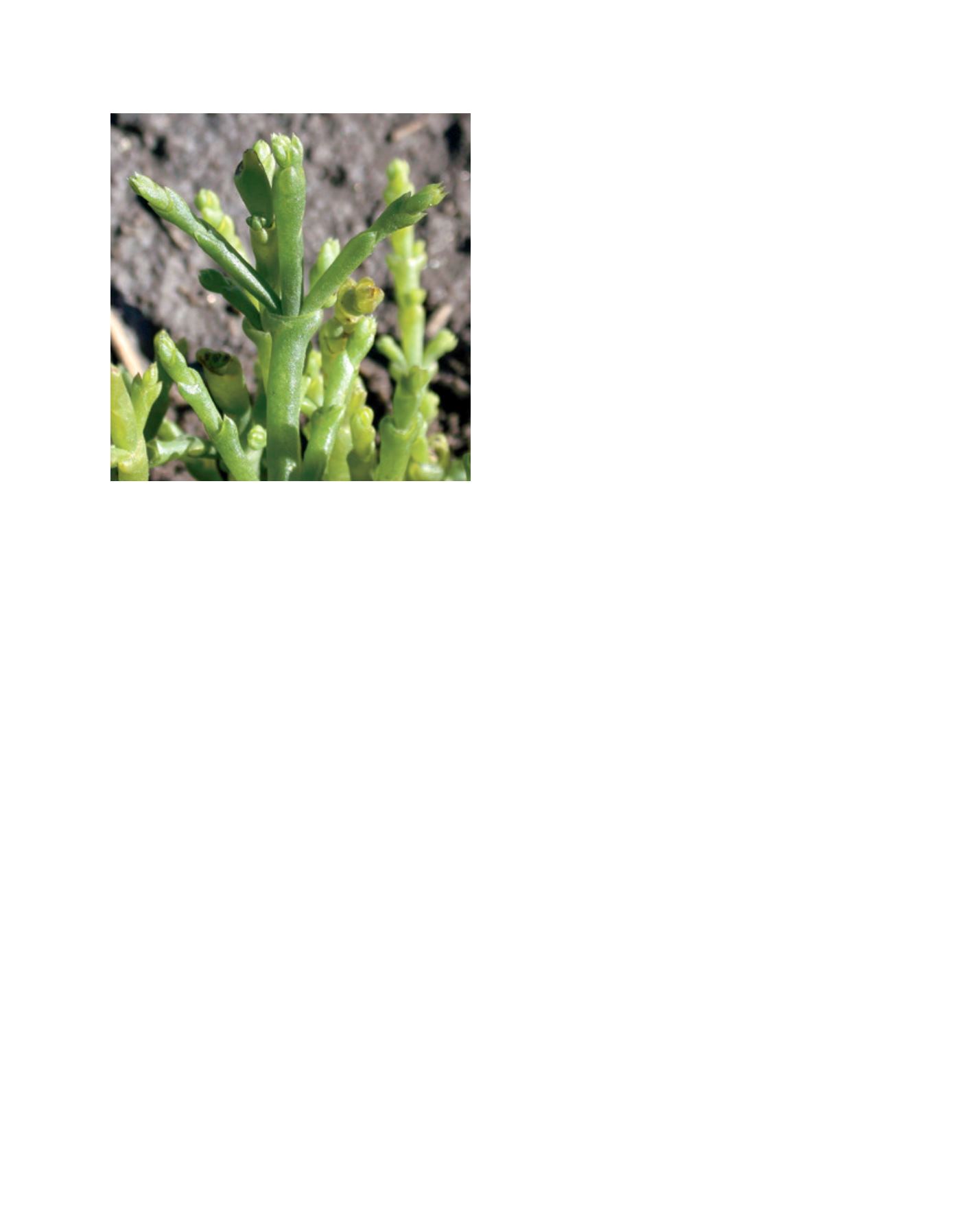

[
] 147
The economics of the introduced biosaline agricultural system
are important. Since desertification is related to the poverty cycle
and marginal agricultural ecosystems, it is important that the
new landscape management system has a positive contribution
to the local economy. Two examples are the introduction of more
salt-tolerant date palms, a cash crop with an already existing
market system in many desert-prone areas, and quinoa, a high
market value crop which produces seeds and biomass well under
marginal conditions (salinity, high temperatures and drought).
Providing forage and grazing genotypes and varieties that are
adapted to marginal conditions (such as drought and salinity)
also requires an analysis of the nutritional value, and the palat-
ability of the introduced crops. A crop can be growing well under
the marginal conditions, but if it does not have a nutritional addi-
tion, or if the small ruminants are not willing to consume it as
part of their diet, the value of the crop is limited for the region.
In some areas, only seawater is available. Some plants growing
under hot, coastal conditions, halophytic plants, can provide an
economic value, for example plants from the Salicornia geno-
type. In the Netherlands, a market chain was developed and
supported, including the development of customer demand
through the introduction of cooking classes and recipes, for
Salicornia imported from the coastal and desert areas in Mexico.
Land and water management needs special attention when
managing agroecosystems under dry and saline conditions.
Water resources are often non-renewable (fossil groundwater)
and application of saline water on soils without considering
the potential accumulation of salts can lead to non-sustaina-
ble, short-term solutions. Although in some cases, short-term
solutions can be applied to overcome crises periods, the
long-term aim of land and water management in fragile and
marginal environments is to develop sustainable solutions.
When saline water is used for crops, forestry or any type of
biomass growth, evaporation and transpiration will result in
an increase of concentration of salts. These salts, previously
stored in the water source (groundwater, seawater or other
surface water sources) are increasing in concentration due
to evapotranspiration, but also due to the spatial accumula-
tion at the locations where plants are grown and irrigated.
Consideration of where the accumulated salts are stored is
a necessity under biosaline agriculture. Options are to store
salts in the soil below the active root zone (through leach-
ing of salts, that is the application of excess water to move
the accumulated salts away from the plant roots), leach salts
into the groundwater (less preferable), or concentrate salts in
evaporation ponds where they can be collected in solid form
and taken out of the agro-production system).
Six different groups of biosaline systems have been piloted
in the Arabian Peninsula, providing opportunities to break
the poverty cycle, green the desert and reclaim salinized
lands. These groups can be classified as conventional forage
production systems; non-conventional forage production
for subcoastal and coastal deserts; high-value crops and date
palms; medicinal crops production systems; seawater-based
systems including aquaculture; and production systems based
on treated wastewater.
Forage production systems
Water scarcity and salinity are two of the biggest constraints to
agricultural production in several counties in the Middle East
and North Africa region. In the United Arab Emirates (UAE),
over the years, more than 70 per cent of the farms were dedi-
cated to forage production, mainly with Rhodes grass (
Chloris
gayana
)—a high water consuming crop. The large-scale cultiva-
tion of this fodder grass species to meet the increased demand for
forages in the emirate, has had a profound impact on the usage of
water resources for agriculture and contributed to the depletion
of the groundwater reserves faster than the aquifer recharge that
depends on the scanty rainfall and as well as in increased aquifer
salinization due to intrusion of seawater, especially in the coastal
areas with close to 4,800 farms facing the risk of abandonment.
In a pilot project on three farms in the UAE, four halophytic
perennial grass species were planted:
Distichlis spicata
,
Sporobolus
virginicus
,
S. arabicus
and
Paspalum vaginatum
. The new grasses,
with the mean green biomass yields ranging between 122 t/ha
and 141 t/ha per year and dry matter yields between 24 t/ha and
42 t/ha per year, proved to be excellent and viable alternatives to
Rhodes grass for sustainable forage production in salt-affected/
degraded farms. In terms of water productivity, the forage yields
obtained per cubic metre of highly saline water (15-18 dS/m)
were 66 per cent more than the yields reported for Rhodes grass
with low salinity water (2 dS/m). In terms of water saving, it
means saving 44 per cent of water to produce the same amount
of forage as Rhodes grass.
Potential high-value crops
Several neglected and underutilized species, because of their
resilience and natural adaptation to harsh growing condi-
tions, can provide alternatives to the staple crops to sustain
farm productivity in desert environments constrained by water
scarcity, poor soil fertility and other such yield-limiting factors.
Among the species native to or naturalized in the Middle
East, Christ’s thorn jujube (
Ziziphus spina-christi
), purslane
Image: ICBA
Salicornia is produced on a large scale and irrigated with seawater in
coastal areas
L
iving
L
and
















